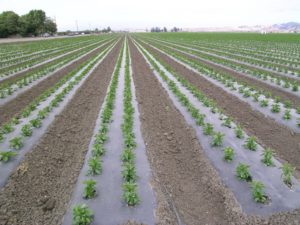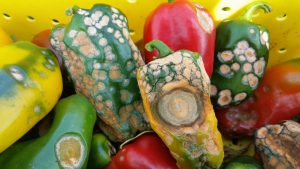Evaluating Freeze Damage in Tree Fruit: The subfreezing temperatures on the morning of April 17 Caused injury at varying levels across the state. Lows ranged from 27-30 in southern counties. Much is the damage is now visible. Any physiological damage that is not visible now will appear as the season progresses. A helpful guide for evaluating fruit damage can be in the Intermountain Tree Fruit Production Guide.
Tree Fruit Phenology: Tree Fruit Phenology remains advanced, but development is slowing. In southern counties all peach orchards are late bloom to early Shuck Split. Redhaven was at approximately full bloom on March 30, and was at Petal Fall by April 14. Peach bloom has been very long this year. Plums are past shuck fall. Pears are late bloom/Petal Fall. Red Delicious is pink to 50% bloom. Cherries are at 50% bloom. [Read more…]


